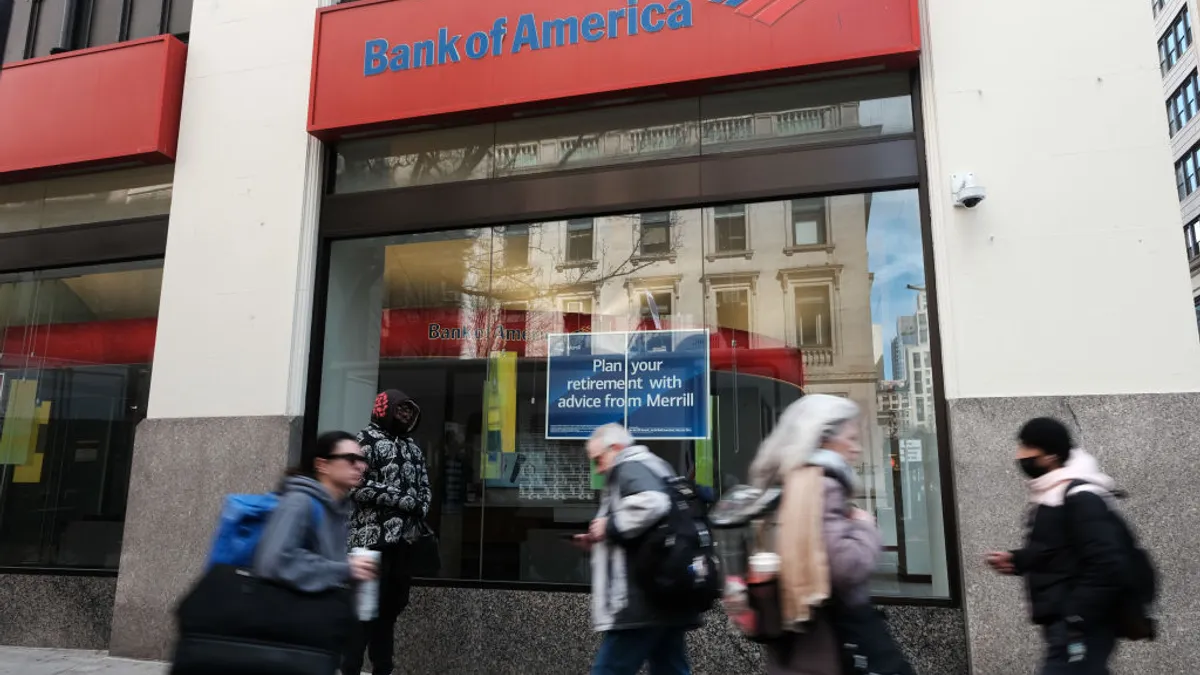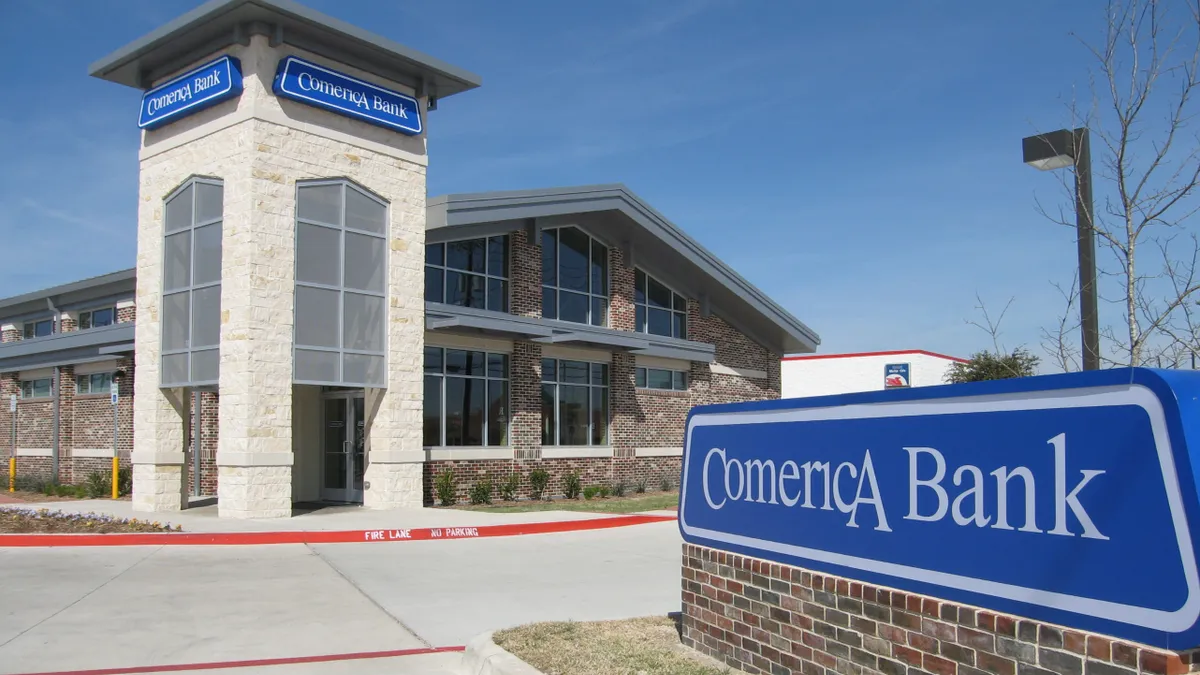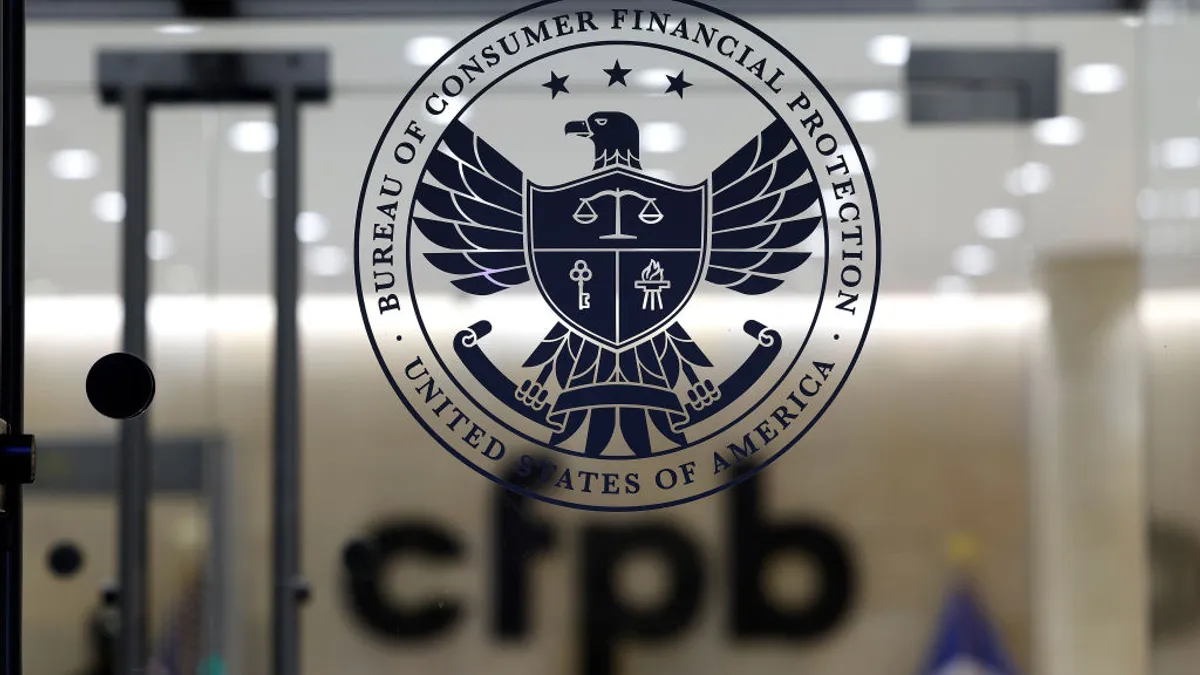The monetary system “stands at the cusp of a major leap,” the Bank of International Settlements wrote last year, in reference to the growing development of tokenization: the representation of claims digitally, on programmable platforms known as the blockchain and distributed ledger technology.
Federal Deposit Insurance Corp. Vice Chair Travis Hill expressed concern Monday that regulators in the U.S. aren’t keeping pace with those internationally on the topic, potentially giving up the opportunity to influence how the technology is used within the financial services sector.
Here are 6 takeaways from Hill’s speech at the Mercatus Center in Arlington, V.A.
Tokenization shouldn’t be confused with crypto.
Tokenized assets, like crypto, exist on the blockchain, but they’re not bitcoin or ether. They, instead, are digitally recorded versions of real-world assets, like commercial bank deposits, gold, and real estate.
“At its most basic level, tokenization transforms the way ownership of assets is recorded and enables far-reaching new functions,” Hill said.
Regulators need to distinguish between crypto and banks’ use of the blockchain and DLT for tokenization.
“I do not think banks interested in the latter, insofar as it simply represents a new way of recording ownership and transferring value, should need to go through the same gauntlet as banks interested in crypto,” he said.
Tokenization has the potential to speed up traditionally slow transactions.
While digital banking and peer-to-peer lending platforms like Zelle and Venmo have made instant transactions seem ubiquitous, some transactions, like cross-border payments and bond issuances, are plagued by delayed settlements.
Tokenization has the ability to make real-time payments in such cases a reality with several facets: it’s programmable, meaning future transactions can be “hard-wired … to self-execute based on the occurrence of future conditions;” offers atomic settlement, or simultaneous payment and delivery; and is immutable, with a ledger serving as a reliable audit trail.
Settlement lags in the $7.5-trillion-a-day foreign exchange market and the trade finance industry could similarly be reduced.
Technological and operational questions persist.
“[W]ill there be a small handful of unified ledgers on which all transactions occur, or will many institutions maintain their own blockchains?” Hill asked. “To what extent will these platforms be interoperable with one another, so that customers using different blockchains can transact seamlessly with each other in a safe and secure manner?”
Global standards are being established, but where is the U.S.?
The Bank of France, Swiss National Bank, Hong Kong Monetary Authority, Monetary Authority of Singapore, Reserve Bank of Australia, and South African Reserve Bank are all moving forward with tokenization regulation. But the U.S. “risks ceding influence at this critical stage,” Hill said.
U.S. regulators worked together in 2021 and 2022 to set policy on digital assets, but “nothing was ever released publicly, and instead, the agencies established processes under which institutions must engage with their regulator on an individual basis before engaging in any activities related to digital assets” – which included not only crypto but blockchain and DLT participation.
A poor regulatory approach to these technologies, Hill said, “presents substantial opportunity costs for bank customers and the U.S. economy, discourages institutions from investing in the future, and cedes influence to non-U.S. jurisdictions.”
Tokenization could potentially speed up bank runs – or prevent them.
Instant settlement can increase the “speed and intensity of runs,” and programmability could exacerbate runs by making it easier for customers to remove funds at a mere suggestion of bank woes.
But atomic settlement mitigates the risk of loss between payment and delivery, he said, and programmability would allow banks to “respond to liquidity stresses immediately and automatically, moving liquidity when and where it is needed.”
Regulators must, too, figure out how to create an “off switch” to stop the movement of tokens if a bank does fail.
Lack of regulatory movement on tokenization hurts smaller institutions most.
The public perception that the “FDIC is closed for business” if institutions are interested in blockchain operations, spurred by the confidential nature of the FDIC’s discussions on the topic, has brought little information forth to the public on what, if anything, the FDIC would be open to exploring.
“While the largest banks are able to hire consultants and staff in Washington, D.C. to read the tea leaves to discern what might be approved, the message being heard by the vast majority of the industry could be interpreted as don't bother trying,” he said.






















